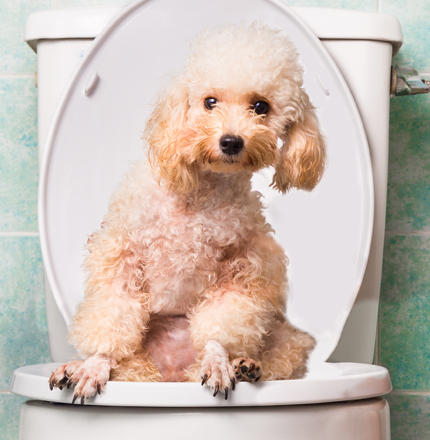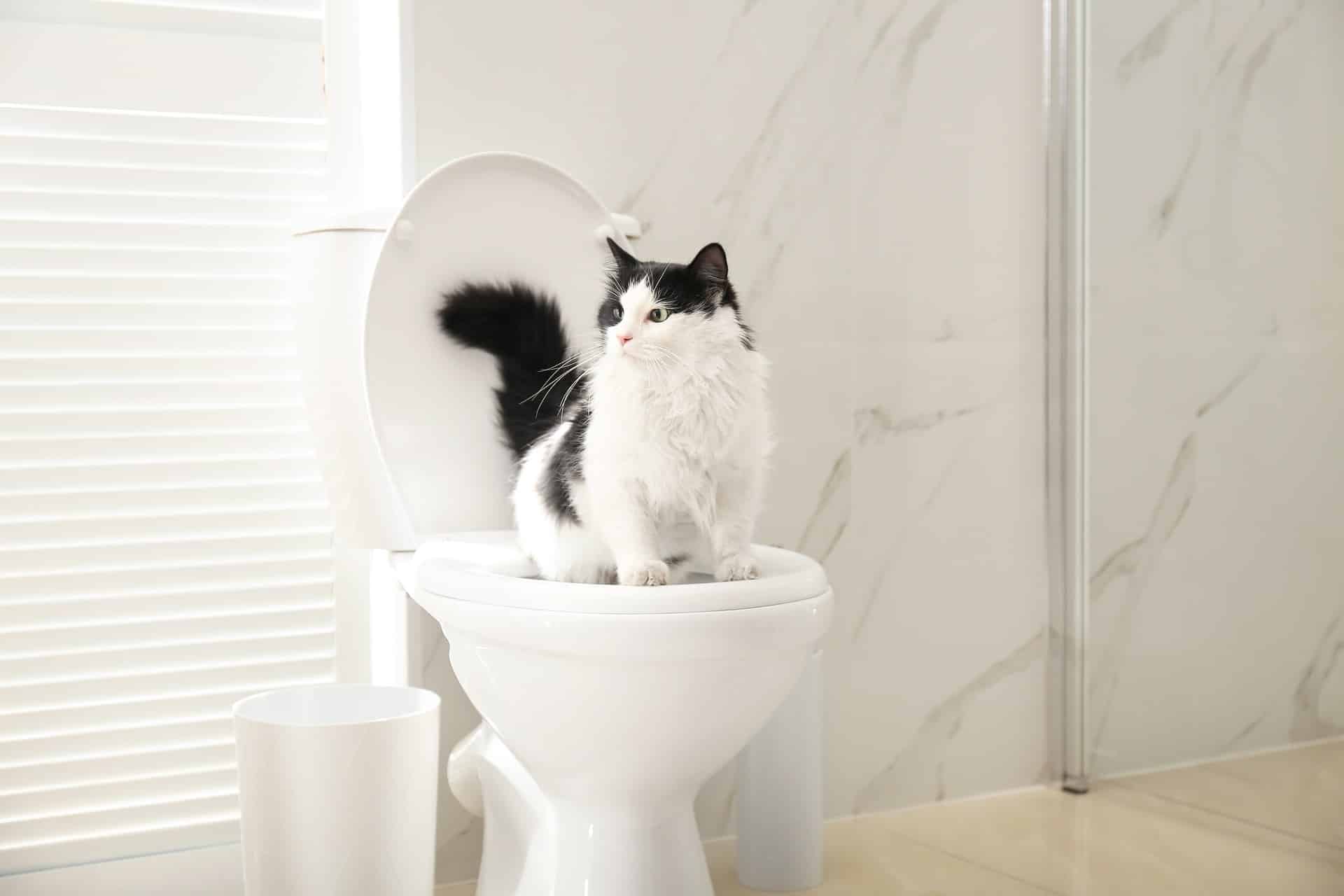How You Must Avoid Flushing Animal Waste Down the Toilet
How You Must Avoid Flushing Animal Waste Down the Toilet
Blog Article
The writer is making a number of good pointers on the subject of 4 Reasons Why Dog Poop Cleanup is Important overall in the article following next.

When it pertains to getting rid of waste, particularly animal waste, lots of people typically consider the practical choice of flushing it down the toilet. Nevertheless, this apparently easy remedy can have serious repercussions for the atmosphere and public health. In this post, we'll discover why flushing pet waste down the commode is a negative concept and give alternate techniques for proper disposal.
Introduction
Correct garbage disposal is critical for keeping ecological sustainability and public health. While it may seem harmless to flush animal waste down the bathroom, it can bring about various issues, both for the environment and human wellness.
Threats of flushing pet waste
Environmental impact
Purging animal waste presents harmful microorganisms and pathogens right into waterways, which can adversely influence aquatic ecological communities. These pathogens can infect water resources and injury marine life, interfering with delicate environments.
Public health issues
Pet waste includes dangerous microorganisms such as E. coli and Salmonella, which can pose severe health dangers to people. Flushing pet waste down the bathroom can pollute water products, causing the spread of diseases and infections.
Alternatives to flushing
Instead of flushing pet waste down the toilet, there are several alternate disposal techniques that are more eco-friendly and hygienic.
Composting
Composting animal waste is a green method to take care of it. By composting, organic matter is broken down into nutrient-rich dirt, which can be utilized to feed gardens and plants.
Landfill disposal
Taking care of pet waste in a garbage dump is an additional choice. While not as environmentally friendly as composting, it is a much safer option to flushing, as it avoids the contamination of water resources.
Family pet garbage disposal systems
There are specific click here family pet waste disposal systems available that safely and hygienically throw away animal waste. These systems commonly make use of enzymes to break down waste and get rid of smells.
Steps to correct pet waste disposal
To make certain proper disposal of animal waste, comply with these actions:
Scooping and bagging waste
Regularly scoop and bag pet waste utilizing biodegradable bags. This protects against waste from polluting the atmosphere.
Utilizing assigned waste bins
Dispose of bagged pet waste in marked waste containers, such as garden compost bins or garbage dump containers. Prevent flushing it down the toilet in all expenses.
Cleaning up can and animal locations routinely
On a regular basis tidy can and animal locations to avoid the buildup of waste and microorganisms. Usage pet-safe cleaning items to preserve health.
Advantages of proper disposal methods
Taking on correct disposal techniques for animal waste offers several advantages:
Minimized environmental pollution
Proper disposal techniques lower the danger of environmental pollution, safeguarding rivers and ecological communities from contamination
Minimized threat of water contamination.
By staying clear of flushing animal waste down the commode, the danger of water contamination is substantially decreased, guarding public health.
Improved sanitation and hygiene
Proper disposal approaches promote far better cleanliness and hygiene, developing a safer atmosphere for both humans and animals.
Final thought
In conclusion, flushing animal waste down the bathroom is dangerous to the atmosphere and public health. By embracing alternate disposal techniques and complying with proper waste monitoring methods, we can lessen the negative impact of animal waste and contribute to a cleaner, healthier world.
Why You Should Never Flush Cat Poop Down the Toilet
A rose by any other name might smell as sweet, but not all poop is created equal. Toilets, and our sewage systems, are designed for human excrement, not animal waste. It might seem like it couldn’t hurt to toss cat feces into the loo, but it’s not a good idea to flush cat poop in the toilet.
First and foremost, assuming your cat uses a litter box, any waste is going to have litter on it. And even the smallest amount of litter can wreak havoc on plumbing.
Over time, small amounts build up, filling up your septic system. Most litter sold today is clumping; it is made from a type of clay that hardens when it gets wet. Ever tried to scrape old clumps from the bottom of a litter box? You know just how cement-hard it can get!
Now imagine just a small clump of that stuck in your pipes. A simple de-clogger like Drano isn’t going to cut it. And that means it’s going to cost you big time to fix it.
For an amusing, graphic tale of what happens when you flush too much litter down the toilet all at once, take a few minutes to read Gene Weingarten’s 2017 Washington Post column “So that’s what happens when you flush cat litter down the toilet.”
Parasitic Contamination
Believe it or not, your healthy kitty may be harboring a nasty parasite. Only cats excrete Toxoplasma in their feces. Yet it rarely causes serious health issues in the cats that are infected. Most people will be fine too if infected. Only pregnant women and people with compromised immune systems are at risk. (If you’ve ever heard how women who are expecting are excused from litter cleaning duty, Toxoplasma is why.)
But other animals may have a problem if infected with the parasite. And human water treatment systems aren’t designed to handle it. As a result, the systems don’t remove the parasite before discharging wastewater into local waterways. Fish, shellfish, and other marine life — otters in particular — are susceptible to toxoplasma. If exposed, most will end up with brain damage and many will die.
Depending on the species of fish, they may end up on someone’s fish hook and, ultimately on someone’s dinner plate. If that someone has a chronic illness, they’re at risk.
Skip the Toilet Training
We know there are folks out there who like to toilet train their cats. And we give them props, it takes a lot of work. But thanks to the toxoplasma, it’s not a good idea.
Leave the toilet to the humans, and accept your future litter cleaning duty.

On a regular basis tidy can and animal locations to avoid the buildup of waste and microorganisms. Usage pet-safe cleaning items to preserve health.
Advantages of proper disposal methods
Taking on correct disposal techniques for animal waste offers several advantages:
Minimized environmental pollution
Proper disposal techniques lower the danger of environmental pollution, safeguarding rivers and ecological communities from contamination
Minimized threat of water contamination.
By staying clear of flushing animal waste down the commode, the danger of water contamination is substantially decreased, guarding public health.
Improved sanitation and hygiene
Proper disposal approaches promote far better cleanliness and hygiene, developing a safer atmosphere for both humans and animals.
Final thought
In conclusion, flushing animal waste down the bathroom is dangerous to the atmosphere and public health. By embracing alternate disposal techniques and complying with proper waste monitoring methods, we can lessen the negative impact of animal waste and contribute to a cleaner, healthier world.
Why You Should Never Flush Cat Poop Down the Toilet
A rose by any other name might smell as sweet, but not all poop is created equal. Toilets, and our sewage systems, are designed for human excrement, not animal waste. It might seem like it couldn’t hurt to toss cat feces into the loo, but it’s not a good idea to flush cat poop in the toilet.
First and foremost, assuming your cat uses a litter box, any waste is going to have litter on it. And even the smallest amount of litter can wreak havoc on plumbing.
Over time, small amounts build up, filling up your septic system. Most litter sold today is clumping; it is made from a type of clay that hardens when it gets wet. Ever tried to scrape old clumps from the bottom of a litter box? You know just how cement-hard it can get!
Now imagine just a small clump of that stuck in your pipes. A simple de-clogger like Drano isn’t going to cut it. And that means it’s going to cost you big time to fix it.
For an amusing, graphic tale of what happens when you flush too much litter down the toilet all at once, take a few minutes to read Gene Weingarten’s 2017 Washington Post column “So that’s what happens when you flush cat litter down the toilet.”
Parasitic Contamination
Believe it or not, your healthy kitty may be harboring a nasty parasite. Only cats excrete Toxoplasma in their feces. Yet it rarely causes serious health issues in the cats that are infected. Most people will be fine too if infected. Only pregnant women and people with compromised immune systems are at risk. (If you’ve ever heard how women who are expecting are excused from litter cleaning duty, Toxoplasma is why.)
But other animals may have a problem if infected with the parasite. And human water treatment systems aren’t designed to handle it. As a result, the systems don’t remove the parasite before discharging wastewater into local waterways. Fish, shellfish, and other marine life — otters in particular — are susceptible to toxoplasma. If exposed, most will end up with brain damage and many will die.
Depending on the species of fish, they may end up on someone’s fish hook and, ultimately on someone’s dinner plate. If that someone has a chronic illness, they’re at risk.
Skip the Toilet Training
We know there are folks out there who like to toilet train their cats. And we give them props, it takes a lot of work. But thanks to the toxoplasma, it’s not a good idea.
Leave the toilet to the humans, and accept your future litter cleaning duty.

As a passionate person who reads about , I think sharing that section was a great idea. In case you enjoyed our blog post plz make sure you remember to share it. I take joy in your readership.
Call Report this page